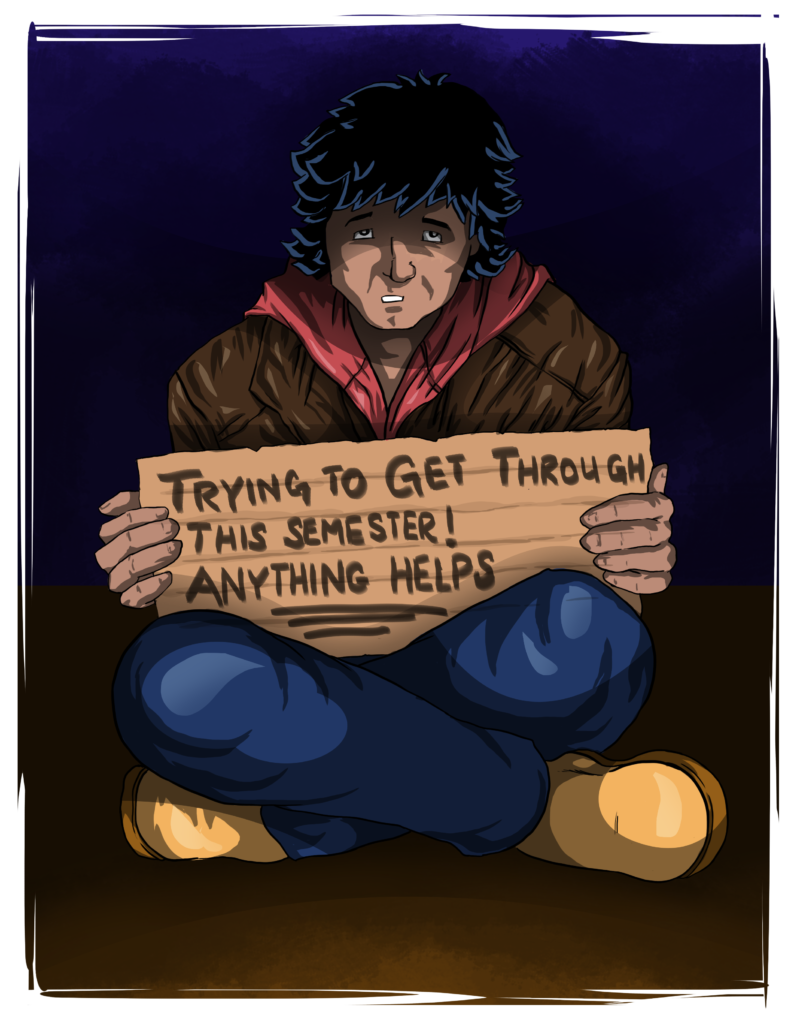With tuition, housing costs, and food to consider, many Canadian college and university students must complete their undergrad alongside a part-time job.
According to a Statistics Canada report from 2010, the percentage of students working a part-time job during their post-secondary education has increased over the last 35 years from one in four, to one in two. This is due in part to the increasing inflation of tuition fees since the 1990s.
Alongside this increase of student employment, René Morissette, the assistant director and research director of Statistics Canada, said job quality for youth has deteriorated over the last four decades. However, youth tend to find employment faster than their adult counterparts because of their willingness to take a variety of jobs.
“As the labour market will likely undergo significant changes in the future, the ability of individuals to adapt to new situations and to learn new skills will plausibly become a key determinant of success in the labour market,” Morissette said.
Accordingto Morissette, this means one of the key success factors for youth finding jobs is being flexible and open to different opportunities.
Some students strategize working long hours during the summer to handle the rent and grocery bills of the school year, while others will take on part-time jobs during the academic session.
Clare Duncan, a second-year journalism and humanities student at Carleton, said she worked a lot during the summer to save money.
“My goal for the summer was to work as much as I could, prioritizing making money over everything . . . The fact of the matter is that I wanted to be comfortable this year with my money situation. I didn’t want to have to stress over paying rent or buying groceries,” Duncan said.
According to Statistics Canada, many students take on part-time jobs alongside summer employment to accommodate the expenses of the school year.
The average income for students working part-time jobs during the 2010 academic year was only $6,300. For students working during the summer months between April and September, the average income was approximately the same for part-timers.
 On average, students in 2015 paid $6,191 in tuition fees, making it nearly impossible to afford based on the average working student’s salary.
On average, students in 2015 paid $6,191 in tuition fees, making it nearly impossible to afford based on the average working student’s salary.
Daynah Clements, a second-year child studies student at Carleton, said she worked her part-time job at Dollarama way too much during her first year of university.
“It’s very hard to keep a good balance between school and work. It’s a tough balance because you need money to pay for school and rent . . . but you need school to better yourself and your future,” Clements said. “You might think you can do 30 hours or so and school, but trust me, it’s very complicated and not worth the drop in your grades.”
Post-secondary institutions try to relieve the stress of student employment by offering resources for them to use, such as career services.
At Carleton University, the Co-Op and Career Services department helps students by giving advice on résumé building, interviews, networking, and career-planning.
Mikaela Stevenson, the outreach and communications co-ordinator with Carleton’s Career Services department, said students often come for help with interviewing skills. She added that becoming comfortable in the work environment is key to finding employment as a student.
“Students often express concern over approaching employers directly,” Stevenson said.
While Carleton’s Career Services can help a student find their strengths and offer them advice on how to present themselves to potential employers, it’s up to the student to take the initiative in finding jobs.
“The best way to gain confidence when approaching or speaking with employers is to do it as often as you can, and get comfortable with stepping outside of your comfort zone,” Stevenson said.
Emily D’Orazio, a fourth-year journalism and women’s and gender studies student at Carleton, is no stranger to the workforce.
From Abstentions (the convenience store in Residence Commons), to the Rideau River Residence Association (RRRA) council, D’Orazio said she spent a large portion of her week working to pay for school, groceries, rent, and her car. For her, working was less about having pocket money.
“It was out of necessity more than anything else,” D’Orazio said.
When asked about her typical work week, D’Orazio said she spent upwards of 25 to 30 hours at work.
While D’Orazio said at both Abstentions and the RRRA office employees can listen to lectures, do their readings, and finish other assignments during their shifts, so long as they complete their necessary duties, jobs like these can be very hard to find off-campus.
Hannah Shapiro, a second-year English and women’s and gender studies student at Carleton, said she found her campus job as a phone program supervisor on Carleton’s job portal.
“[Carleton’s job portal] seems to have a lot of open postings at peak hiring times, so it’s definitely a good place to start,” Shapiro said. “I’ve also had good luck just walking into places and making a good impression. Looking at job boards like Indeed or trying to get in somewhere through a connection can also be helpful.”
With the increase in part-time, and even full-time work during the school year, students have to be careful not to burnout. Whether students decide to work during the school year or not, Stevenson said she and her Career Services team emphasize the importance of time management.
“Students should pay attention to the minimum number of hours a part-time position requires them to work per week and make sure it aligns with the number of hours they know they can commit to working after they’ve set aside time for classes, homework, extracurricular activities, and time for friends and family,” Stevenson said.
If you cannot commit to working part-time while studying full-time, Stevenson said it would be wise to consider temporary employment during the holidays.
“Later in the fall, retailers and restaurants are often looking to hire additional staff for short-term seasonal work to help out with the holiday rush. This could provide you with an opportunity to gain some extra money and experience without too much commitment,” Stevenson said.
Alongside practising time management, Shapiro said it’s important to put your mental health first when keeping up with your studies and working part-time during the school year.
“It’s easy to get caught up in wanting to be perfect at everything, but it’s okay to let things slide from time to time to preserve your health and safety. There are a lot of great resources on campus for navigating these situations that I think we sometimes forget to use,” Shapiro said.
To prevent burnout, Shapiro suggests eating healthy, getting enough sleep, and making sure to practise self-care.
“There’s nothing impressive or admirable about running on empty and burning yourself out,” she said. “If you take care of yourself, set goals, and make a plan, then everything else will fall into place.”
Photo by Meagan Casalino






